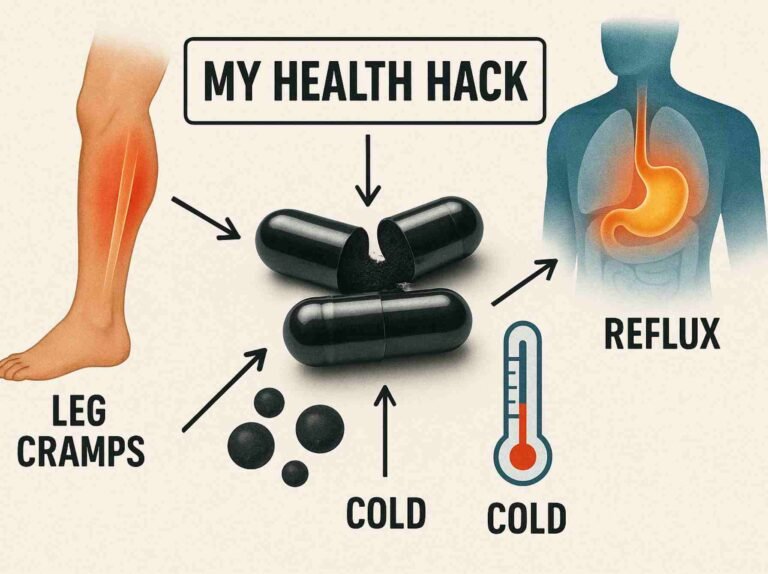Have You Ever Wondered What Would Happen If You Ate Only Meat?
I sure did.
That’s why, since the beginning of the year, I’ve been following the Carnivore Diet. I’ve only broken it a handful of times—mainly to break through weight loss plateaus.
This diet takes low-carb eating to the extreme. No plants, no grains, no sugar—just meat, eggs, and dairy. Some people swear by it for weight loss, energy, and mental clarity. Others worry about nutrient deficiencies and long-term health risks.
So, how does it actually work? More importantly, does it work for me?
Here’s everything I’ve learned after 72 days of eating only animal-based foods.
1. What Is the Carnivore Diet?
The Carnivore Diet is simple: eat only animal-based foods. No plants. No exceptions.
A. What You Eat on Carnivore
✅ Beef, lamb, pork, and poultry – The staples of the diet.
✅ Fish and seafood – Salmon, sardines, mackerel, and shellfish.
✅ Eggs and high-fat dairy – Butter, cheese, and cream (but no milk).
✅ Organ meats – Liver, heart, kidneys (nutrient powerhouses).
✅ Animal fats – Tallow, lard, and fatty cuts of meat.
✅ Bone broth and collagen – Supports joints and gut health.
B. What You Avoid on Carnivore
❌ Fruits and vegetables – No fiber, no plant toxins.
❌ Nuts, seeds, and grains – Too many anti-nutrients.
❌ Legumes – No beans, lentils, or peanuts.
❌ Sugar and artificial sweeteners – Spikes insulin.
❌ Processed foods and seed oils – No junk food allowed.
C. Strict vs. Liberal Carnivore
- Strict Carnivore: Only beef, salt, and water.
- Liberal Carnivore: Includes eggs, dairy (no milk), seafood, and limited seasonings.
This diet is often compared to keto, but unlike keto, it completely eliminates all carbs.
2. The Science Behind the Carnivore Diet
A. How It Affects Metabolism
🔥 Switches the body to fat-burning mode (ketosis).
📉 Stabilizes blood sugar and insulin levels, reducing cravings.
🚫 Eliminates plant anti-nutrients (lectins, oxalates, phytates) linked to inflammation.
B. Impact on Gut Health
🛑 Removes fiber, which some say worsens IBS and bloating.
✅ Reduces gut inflammation by cutting out irritants.
🔬 Alters the gut microbiome—but scientists are still studying its long-term effects.
C. Hormonal Effects
📈 Boosts testosterone and growth hormone due to higher fat intake.
🩸 Regulates insulin, reducing blood sugar spikes and crashes.
❗ Some women report menstrual cycle changes—possibly from low carbs.
3. The Pros of the Carnivore Diet
A. Simplicity and Satiety
🥩 No calorie counting—just eat meat.
🍽 Protein and fat keep you full, reducing cravings.
B. Weight Loss and Fat Burning
🔥 Boosts fat metabolism by eliminating insulin-spiking foods.
⚖️ Many people lose weight effortlessly without tracking portions.
C. Reduces Inflammation and Autoimmune Symptoms
🚫 Removes common irritants like gluten, lectins, and seed oils.
💪 Some report better skin, fewer aches, and improved digestion.
D. Mental Clarity and Stable Energy
⚡ No carb crashes—just steady energy all day.
🧠 Many experience sharper focus and better mood stability.
✅ Personally, I can say yes to all of these benefits—and more.
4. The Cons of the Carnivore Diet
A. Nutrient Concerns
⚠️ No vitamin C, fiber, or plant-based antioxidants.
💧 Electrolyte imbalances if sodium, potassium, and magnesium aren’t managed.
B. Digestive Adjustments
🤕 Keto flu symptoms like fatigue and headaches during transition.
🚽 Constipation or diarrhea as the gut adjusts to no fiber.
C. Social and Practical Challenges
🍽 Hard to eat out—most meals come with plant-based sides.
💰 Quality meat can be expensive.
D. Long-Term Health Concerns
🔍 Lack of long-term studies on cholesterol, heart health, and gut microbiome diversity.
🩺 Potential kidney strain for those prone to high protein intake.
🚨 This is why I break the diet occasionally. I don’t plan to follow it for years straight, but for losing weight, lowering blood pressure, and improving insulin sensitivity, it has made a big difference.
5. Who Might Benefit from the Carnivore Diet?
✅ People with autoimmune disorders – Avoiding certain foods may reduce symptoms.
✅ Those struggling with weight loss – High protein and fat keep hunger in check.
✅ People with digestive issues – Some find fiber elimination beneficial.
But it’s not for everyone, and some people may experience negative side effects.
6. How to Start the Carnivore Diet
A. Transitioning to Carnivore
⏳ Gradually reduce carbs to avoid keto flu.
💧 Increase salt and electrolytes to prevent dehydration.
🥓 Eat fatty meats to maintain energy levels.
B. Sample Carnivore Meal Plan
🍳 Breakfast: Eggs, bacon, and butter
🥩 Lunch: Ribeye steak with salt
🐟 Dinner: Salmon pan-fried in beef tallow
7. Carnivore Diet vs. Other Diets
A. Carnivore vs. Keto
🥑 Keto allows vegetables, nuts, and dairy.
🥩 Carnivore eliminates all plant foods.
B. Carnivore vs. Paleo
🍎 Paleo includes fruits, vegetables, and nuts.
🥓 Carnivore is strictly animal-based.
C. Carnivore vs. OMAD (One Meal A Day)
⏱ OMAD focuses on meal timing.
🥩 Carnivore focuses on food selection (many combine both).
🔹 I follow COMAD—Carnivore + OMAD. For me, it’s the best way to keep things simple and effective.
8. FAQs About the Carnivore Diet
Q: Will I get enough vitamins and minerals?
Meat provides many nutrients, but some may need to supplement vitamin C, magnesium, and electrolytes.
Q: Is it safe long-term?
The long-term effects are unknown, and results vary from person to person.
Q: Will my cholesterol go up?
Possibly. But many see improved metabolic markers despite higher LDL levels.
Q: Can I build muscle on Carnivore?
Yes, high protein intake supports muscle growth and recovery.
Q: Will I lose weight?
Most people lose fat effortlessly due to appetite control and stable insulin levels.
Conclusion: Is the Carnivore Diet Right for You?
The Carnivore Diet has strong supporters and critics. It can promote fat loss, reduce inflammation, and simplify eating, but it also has nutritional and social challenges.
If you’re curious, start slow, track your progress, and listen to your body. It may be a powerful tool—or just another diet trend.
For me, it’s been a game-changer.
See you tomorrow! 😊
Warmly,
Paul



